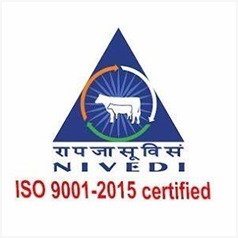
FORECASTING AND FOREWARNING TECHNIQUES OF ANIMAL DISEASES
Introduction
Forewarning and forecasting of animal diseases are essential for maintaining livestock health and preventing outbreaks that may have significant implications for the economy and public health. Technologies like data analysis and modeling has revolutionized the way for epidemiologists and veterinarians predict and diagnose animal diseases.
Forecasting and Forewarning
Forecasting and Forewarning is the process of making future predictions using past and present trends. Animal disease forecasting is a management system used to predict occurrence or spread of disease and suitable methods to study disease using the epidemiological triangle i.e. Pathogen, environment and host.
Principles
Three fundamental ideas form the basis of this forecasting process:
- Data collection from sources such as district veterinary dispensaries and the NADRS portal.
- Analytics, which transforms data into geographic models using machine learning algorithms.
- Communication, which focuses on implementing disease surveillance into practice based on the analytical insights across different regions.
Objectives of Forecasting
- To investigate the routes of transmission and to learn how to prevent the spread of epidemic diseases
- To monitor the effectiveness of disease control campaigns
- Emergency preparedness & disease management strategies
- To demonstrate knowledge about the epidemiology of diseases
Various Mobile Apps Created for Forecasting and Reporting Diseases
• Livestock Disease Forewarning App: NIVEDI created this app, which gives disease forewarnings in advance of two months.

• IVRI Zoonoses App: Basic information regarding important zoonotic illnesses and national disease control programs are provided by this app.

• IVRI Disease Control App: This software, which covers symptoms, diagnosis, treatment, prevention, and control strategies, was created to educate users about significant diseases that impact dogs, poultry, and livestock.

National Animal Disease Referral Expert System (NADRES)
National Animal Disease Referral database is a weather-based forewarning system enabled with an artificial intelligence system developed by ICAR- National Institute of Veterinary Epidemiology & Disease Informatics Bengaluru, Karnataka state, India that forecast potential threats from pathogens two months in advance to provide the stakeholders with sufficient timeline for awareness and preparedness to act.
In order to predict output (infectious risk prediction) values that lie within a reasonable range, artificial intelligence (AI) and machine learning (ML) models utilises preprogrammed algorithms that receive and analyse input data.
Machine Learning-Based Disease Diagnosis and Forecasting
• Identification of Subclinical Mastitis in Cows: Subclinical mastitis in cows has been identified with the use of machine learning. To forecast somatic cell count, a decision tree system uses multiple input datasets, including electrical conductivity, volume, lactose, milking duration, fat, protein, and peak flow.
• Lumpy Skin Disease (LSD) Prediction: Artificial Neural Networks (ANN), a type of machine learning model, are used to predict the occurrence of LSD based on information about land cover, elevation, population density, and weather.
Geographic Information System & Remote Sensing
Geographic Information Systems (GIS) provide abilities for geographical analysis and visualization to monitor the spread of epidemic diseases. Because of its ability to acquire and analyse spatial data and its extensive spatial analytic features, it is appropriate for the development of a disease tracking and prevention system. The Institute has mapped the prevalence of ovine herpes virus-2 and bluetongue (BT) using this method. Finding regions with high bluetongue prevalence aids in the planning, execution, and distribution of resources for appropriate control measures.
Global early warning and response system (GLEWS)
GLEWS is a collaborative system that enhances the value of integrating and coordinating the alarm and response mechanisms created by WHO, FAO, and OIE. The GLEWS uses epidemiological analysis, information sharing, and cooperative field missions to evaluate and control outbreaks to predict, prevent, and manage the risks of animal diseases, including zoonoses.
Conclusion
The integration of modern forecasting techniques such as GIS, AI, and statistical modeling is revolutionizing how we predict and manage animal diseases. By leveraging these technologies effectively, stakeholders can mitigate risks associated with livestock diseases, ultimately protecting public health and ensuring food security.
Future Directions
The future of animal disease forecasting lies in enhancing the accuracy of predictive models through improved data collection methods and advanced analytical techniques. Collaboration among veterinarians, epidemiologists, and data scientists will be crucial in developing robust systems that can adapt to changing environmental conditions and emerging pathogens.
1Bagavathi M,2Manisha,1Animesh Patel, 3Ajay K Dang
1MVSc Scholar, Animal Physiology Division, ICAR – National Dairy Research Institute, Karnal-132001, Haryana, India.
2Ph.D Scholar, Animal Physiology Division, ICAR – National Dairy Research Institute, Karnal-132001, Haryana, India.
3PS and Head, Animal Physiology Division, ICAR – National Dairy Research Institute, Karnal-132001, Haryana, India.

















